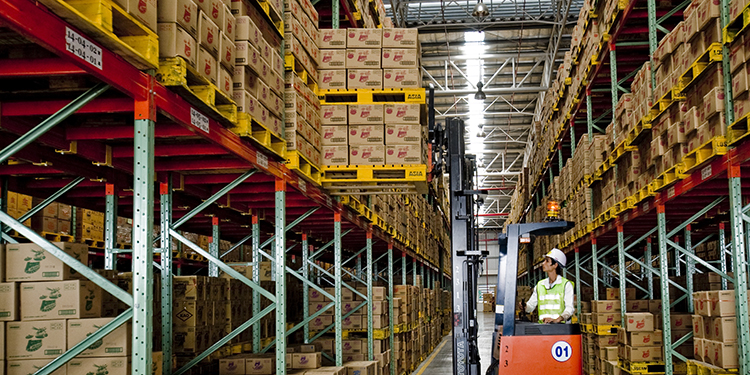How Clearances Around Pallet Loads Affect Storage Rack Safety

When designing an industrial steel storage rack, a professional rack design engineer must not only take into consideration the size and shape of the loads, but also the amount of clearance — or empty space — around the load. Designs that don’t leave enough clearance increase the chances of a pallet load and/or the forklift colliding with a rack column or another stored pallet, potentially damaging both product and racking components and creating an unsafe situation. Conversely, designs that allow for excessive amounts of clearance can yield a racking system that fails to maximize the available cube of the building, ultimately increasing the cost of the structure by wasting space.
RMI’s Considerations for the Planning and Use of Industrial Steel Storage Racks, Section 2.13.2, explains this potential issue in greater detail:
Too little clearance could either result in damage to both the loads and the storage racks or a reduction in material handling movement, which in turn increases operating costs. Too much clearance wastes space and increases the costs of construction, and, in some cases, the cost of the rack system.
The safest best practice is to incorporate clearances that accommodate the widest and tallest points of a specific load. Depending on the load itself, the widest part might be the pallet, the load itself (if it extends beyond the pallet’s footprint), or a portion of an asymmetrical or oddly shaped item. For single-deep selective rack holding two loads side-by-side, clearance recommendations are:
- 3 inches between the edge of the column and the edge of the widest part of the load,
- 6 inches between the widest part of each of the two loads, and
- 6 inches between the top of the load and the bottom of the beam above it, ensuring enough space for the material handling equipment to safely place or remove it.
More clearance is recommended for double-deep storage racking configurations. Push-back rack systems — in which pallets are stored on a series of nested carts that roll atop inclined steel rails — less clearance can be specified, so long as the loads have adequate headspace to travel beneath any interior obstructions.
Additionally, to ensure that water can flow through racking and around pallets to more effectively suppress a fire, the National Fire Protection Association (NFPA) 13 Standard for the Installation of Sprinkler Systems requires a minimum space between loads of 6 inches in the down-aisle direction.
Looking for more information on how to plan a new rack project? Download RMI’s Considerations for the Planning and Use of Industrial Steel Storage Racks here.


